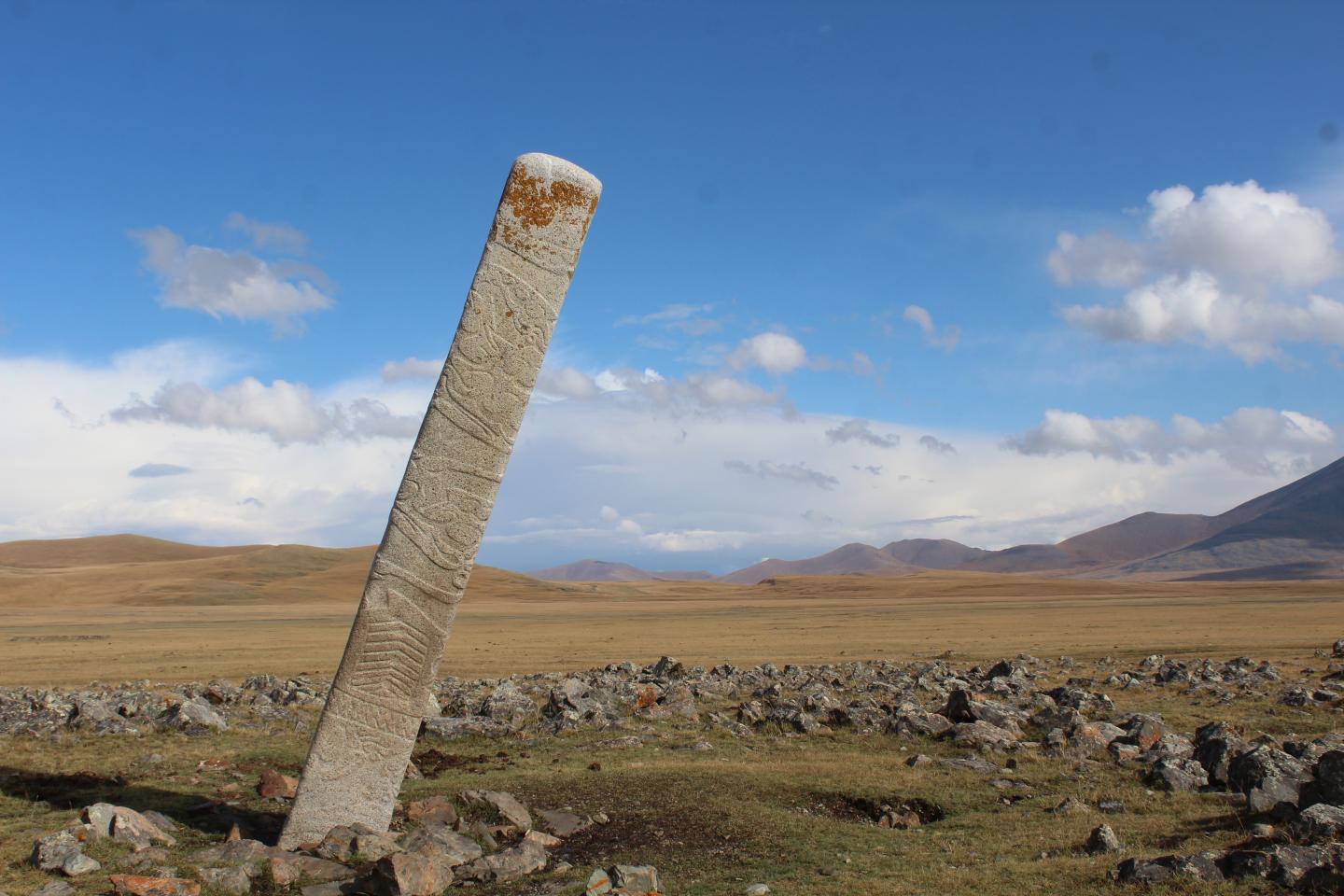Across the Mongolian wilderness, hundreds of ancient decorated megaliths dot the landscape, sporadically poking out of the earth like matchsticks stuck in the sand. Their existence for thousands of years is still brimming with mystery since it’s unclear who built these strange stone monuments, let alone why, but archaeologists have offered up a few tantalizing theories to explain them.
Known as deer stones, or reindeer stones, well over a thousand of the megaliths can be found in Mongolia and parts of Siberia. They vary in style and size, but many are taller than a human with some reaching upwards of 4.5 meters (15 feet) in height.
Elaborate carvings feature heavily on the stones. While motifs like human faces, patterns, weapons, and animals can often be seen on the stones, one of the most common themes is reindeer, hence their name. Some depictions even feature flying reindeer, like an early homage to Santa’s sleigh pullers.
Strangely, some of the stones have rounded tops yet others have straight ones. This might have some stylistic significance, although researchers suspect this might be a sign of damage, perhaps at the hands of enemies who wished to destroy the monuments.
A leaning Deer Stone placed in front of dozens of small stone mounds containing ritually-sacrificed horse burials at the Bronze Age monument site of Ikh Tsagaanii Am, Bayankhongor Province, central Mongolia. Image credit: William Taylor
It was once assumed by some that deer stones were the work of Scythians, the horse-riding nomads who raised hell in this strip of Eurasia from around the 7th century BCE until the 3rd century BCE. However, radiocarbon dating of horse skulls found near some of the stones indicates they were crafted before the Scythian culture took root in the Late Bronze Age (1200 to 700 BCE).
The big question is why these deer stones were created. One theory poses that the deer stones are burial monuments used in the funerals of powerful leaders or esteemed warriors. After all, the Scythians who came after this culture are well-known for their elaborate burials. However, human remains are not generally found at the sites, which largely discredits this idea.
Another theory suggests the stones had something to do with reindeer herding, perhaps marking the site where tethered reindeer were used to lure in wild deer. Although sacrificed horse bones have been discovered near the stones, deer remains are rarely found, which throws cold water on the idea too.
A deer stone situated nearby of Hovd river. Image credit: longtaildog/Shutterstock.com
Based on the depictions of humans that feature on some stones, other experts have contended that the sites were used by shamans in spiritual ceremonies.
“The rare depictions of human faces are usually seen with rounded, open mouths—as though singing or chanting—and seem likely to represent shamanistic power or séance. The deer-bird image also suggests spiritual transformation experienced in shamanic flight in the passage from earth to sky, or the passage of the soul of a deer stone personage from earthly life to the heavens after death,” reads a 2009 study by William Fitzhugh, Smithsonian anthropologist and director of its Arctic Studies Center, who heads up the Mongolian-Smithsonian Deer Stone Project.
“It seems likely that these images replicate deer-bird images tattooed on the torsos of the real warriors who were represented by the deer stones, perhaps giving them protection from dangerous forces, spirits, or events.”
Perhaps the true meaning of the stones will never be known again. Whatever purposes these stones serve, they clearly held a great deal of significance for the mysterious people who once roamed this land.
Source Link: Hundreds Of Ancient Reindeer Stones Dot Mongolia And No One Knows Why
